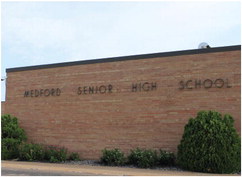Take time needed to bring a high school plan voters will accept


Star News
Editorials
As sure as the sun rises, the Medford school district will be coming back to voters for a second try for major renovations to the high school building.
Last month’s narrow defeat of a $39.9 million referendum did nothing to make the long-term problems of the current high school go away. Regardless of the referendum’s result there are still legitimate security concerns in the building as well as under-sized and outdated classroom spaces, especially in the sciences, technology and arts areas. The basic infrastructure, from plumbing pipes to digital technology, is limping along requiring constant maintenance and bandaids to keep it running.
All of these things did not change because 174 more people voted against the school district’s plan on how to fix the problems than voted for it.
Last week members of the Medford school board had a lengthy discussion about where the district should go from here. The board was evenly split between bringing the exact same referendum question back for a second try in April and holding off to collect input about possible things to tweak in order to make it more palatable to voters.
Coming back to voters with the same proposal has a lot to offer when it comes to election strategy. The spring election generally has a much lower turnout than the fall elections and with school board races dominating the ballot, those who do vote are more connected to school issues. In addition, there is hope that more “Yes” voters will be able to convince others of the benefits of the referendum to allow it to pass.
What this strategy doesn’t take into account is that the referendum failed for a reason. Sending it back to voters for a second try without making any changes dismisses the concerns people have with the proposed project as being not worthy of consideration.
The process of getting the referendum to voters was a lengthy one with school board members and administration working on it for more than a year. Along the way there have been compromises and cuts made in order to come to consensus on what could be done with the dollars the polling said voters would be willing to support.
The basic assumption, and driving force of the district’s strategy, was that people vote solely based on their pocketbook. While there is merit to this, it does not paint a complete picture as to how voters reach decisions, nor does it take into account that voters can equally get turned off if they feel corners are being cut.
The clock is ticking for the school district with the board needing to decide on referendum question language in January to be on the April ballot. With no other elections scheduled to take place in 2021, missing the window of opportunity would delay sending the question to voters until April 2022.
While approval of a plan in April would be ideal as far as keeping to construction timelines and cost projections, board members should listen to the community, especially with the unknown impacts COVID-19 will have as winter progresses. It may be better to delay sending it to voters rather than appearing to want to rush it through.

